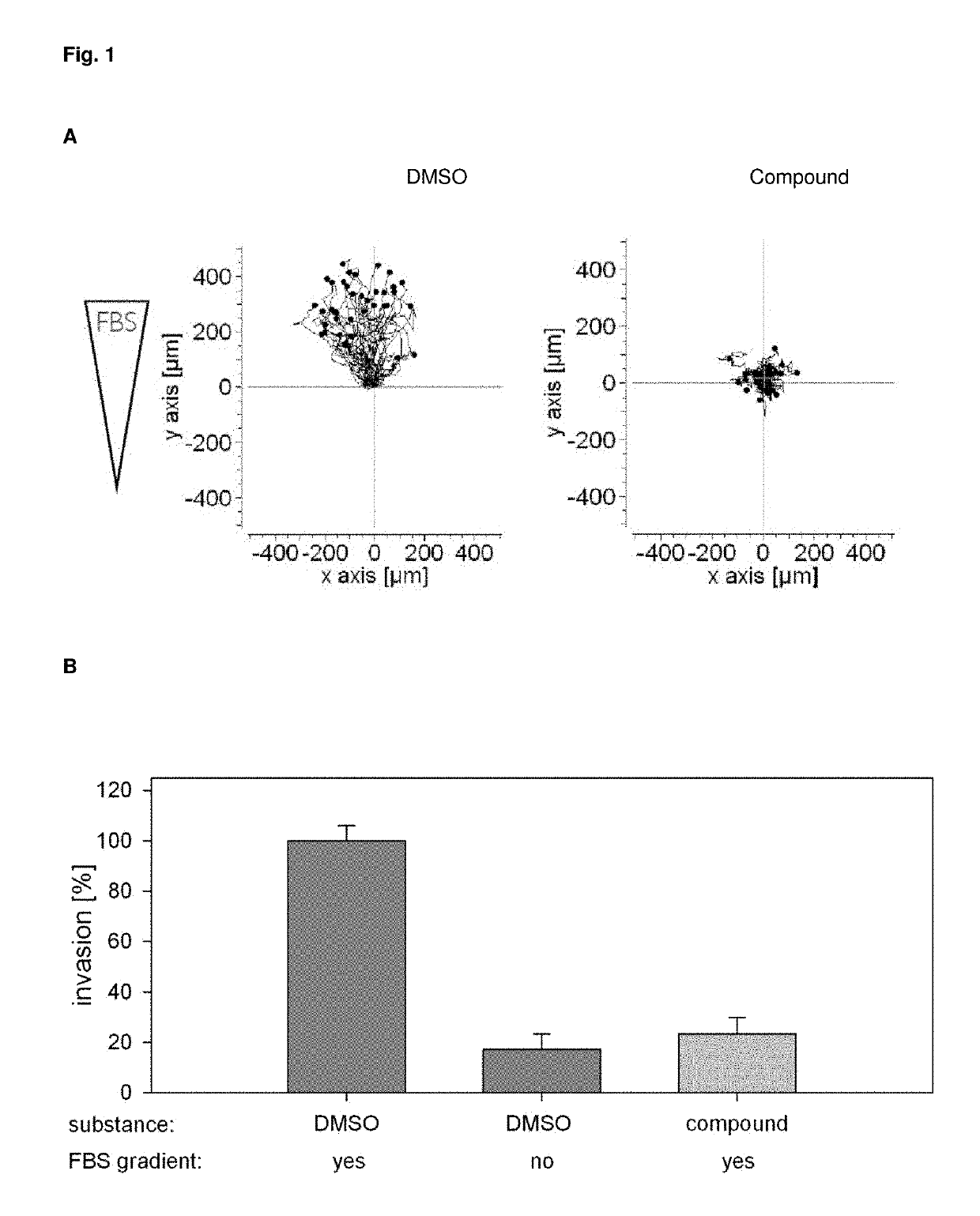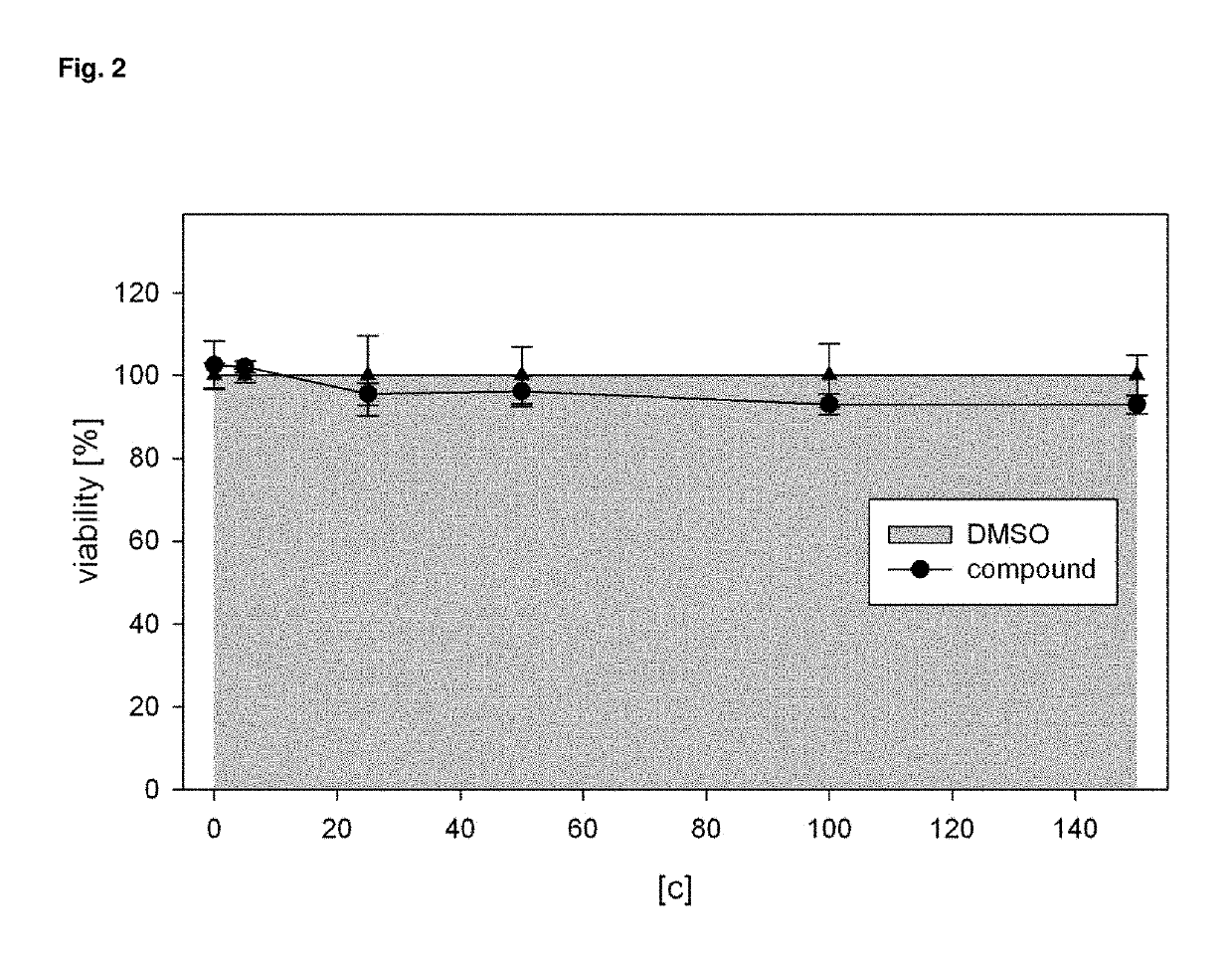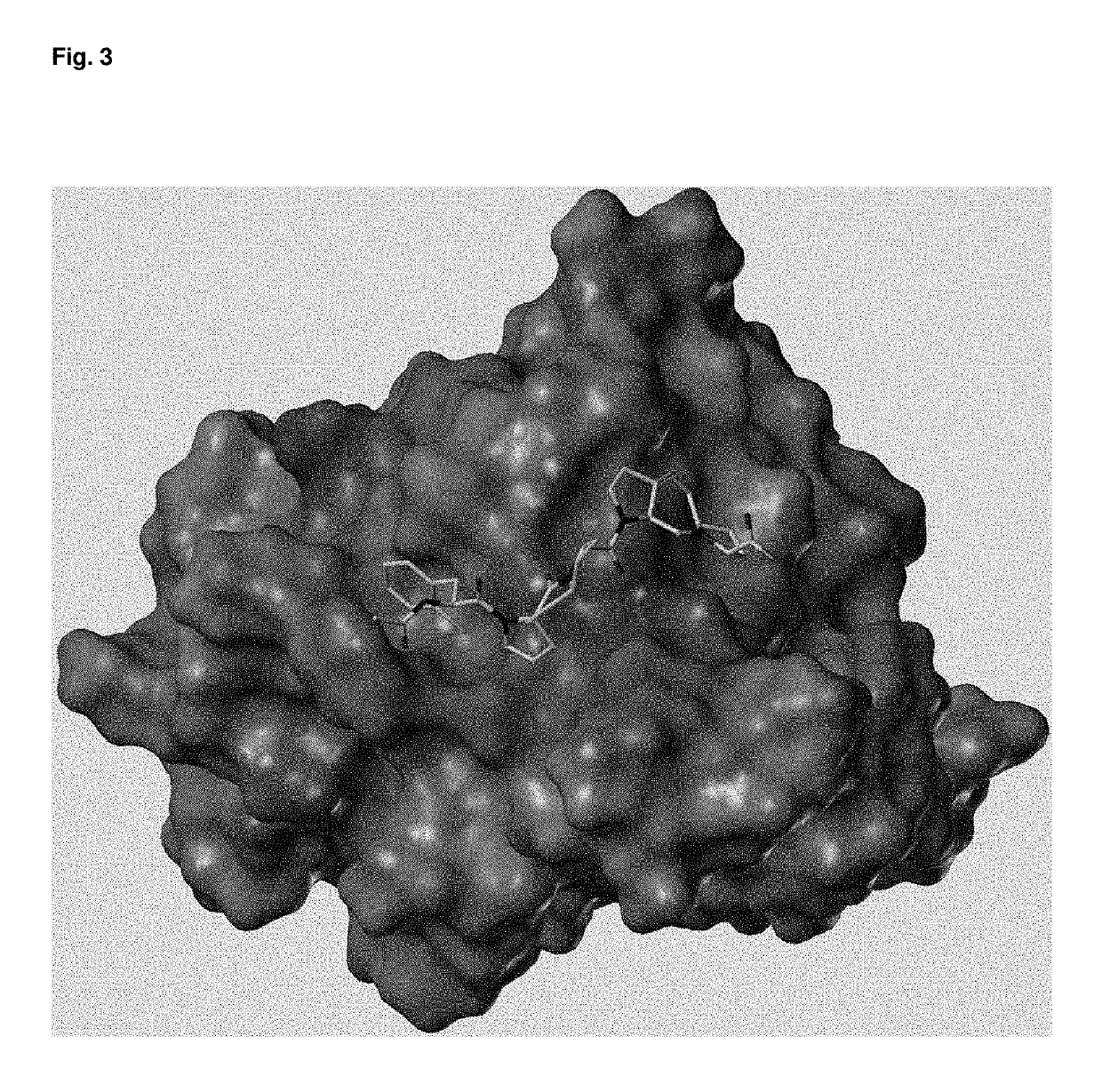Inhibitors for inhibiting tumor metastasis
a tumor metastasis and tumor technology, applied in the direction of peptides/protein ingredients, drug compositions, peptides, etc., can solve the problem of high production cos
- Summary
- Abstract
- Description
- Claims
- Application Information
AI Technical Summary
Benefits of technology
Problems solved by technology
Method used
Image
Examples
example 1
Synthesis of the Compounds
Synthesis of Fmoc-ProM-1:
[0076]The tricyclic dipeptide mimetic Fmoc ProM 1 was synthesized as the first PPII scaffold and successfully incorporated in peptide ligands as a proline-proline equivalent.
[0077]
[0078]In the first step, the racemic acid building block rac-23 was coupled to the amine 24 with the use of PyBop. The resulting diastereomers 25 and dia-25 were obtained after column chromatographic separation with silica gel with a respective yield of 37% (Scheme 4.86).
[0079]
[0080]The dipeptide 25 was subsequently converted into the tricyclic Boc-ProM-1-OtBu with the use of the Grubbs II catalyst (10 mol %). The ring-closing metathesis was carried out under reflux in toluene (120° C.) and after column chromatographic purification provided the desired product in a yield of 81%. After a final conversion of Boc-ProM-1-OtBu to Fmoc-ProM-1 (TFA / NaHCO3, Fmoc-CI) the target compound was isolated in a yield of 99% (Schema 2). The purification of Fmoc-ProM-1 was ...
example 2
Biological Investigations
[0134]Without being limited thereto, the invention will be explained in more detail in the following using the biological properties of the inventive compounds.
[0135]As the “starting ligand” for binding studies, the “wild-type” sequence Ac-SFEFPPPPTEDEL-NH2 (an excerpt from the ActA protein of the intracellular bacterium Listeria monocytogenes, FIG. 5) was first reduced to the FPPPP core motif, which is recognized specifically by EVH1 domains. Consequently, for the first time, the mass of the resulting ligand Ac-FPPPP OH was in the low molecular weight range (<500 and <900 Da, depending on the definition), in the sense of a “small molecule” for affecting protein-protein interactions.
[0136]
[0137]The substitution of the diproline units of the FPPPP motif with the Fmoc-ProMs was carried out. The binding affinities of the ligands to the domain were subsequently determined by means of isothermal titration calorimetry (ITC) on the basis of the dissociation constan...
example compound iii
inhibits the migration of MDA MB 231 breast cancer cells by more than 90% relative to the baseline value (DMSO / no FBS gradient) (FIGS. 1 A and B).
[0155]In the process the compound was found to be non-toxic to cells (FIG. 2). The low or absent cellular toxicity likewise constitutes a surprising and advantageous property of the compounds. The inventive compounds bind to the target receptor not only with very low dissociation constants, but also with high specificity. For medical use of the compounds this is to be considered as an advantage.
[0156]The binding of the ligand to ena-EVH1 could be verified via the crystallization of the complex with Ena-EVH1 (resolution 1.02 Å) (FIG. 3). This proves that the claimed compounds exhibit exceptionally good binding properties.
[0157]The inventive compounds were further tested with respect to their stability and protein binding properties in plasma, as well as their metabolic stability. The inventive compounds surprisingly exhibit exceptionally go...
PUM
| Property | Measurement | Unit |
|---|---|---|
| dissociation constant | aaaaa | aaaaa |
| dissociation constant | aaaaa | aaaaa |
| dissociation constant | aaaaa | aaaaa |
Abstract
Description
Claims
Application Information
 Login to View More
Login to View More - R&D
- Intellectual Property
- Life Sciences
- Materials
- Tech Scout
- Unparalleled Data Quality
- Higher Quality Content
- 60% Fewer Hallucinations
Browse by: Latest US Patents, China's latest patents, Technical Efficacy Thesaurus, Application Domain, Technology Topic, Popular Technical Reports.
© 2025 PatSnap. All rights reserved.Legal|Privacy policy|Modern Slavery Act Transparency Statement|Sitemap|About US| Contact US: help@patsnap.com



